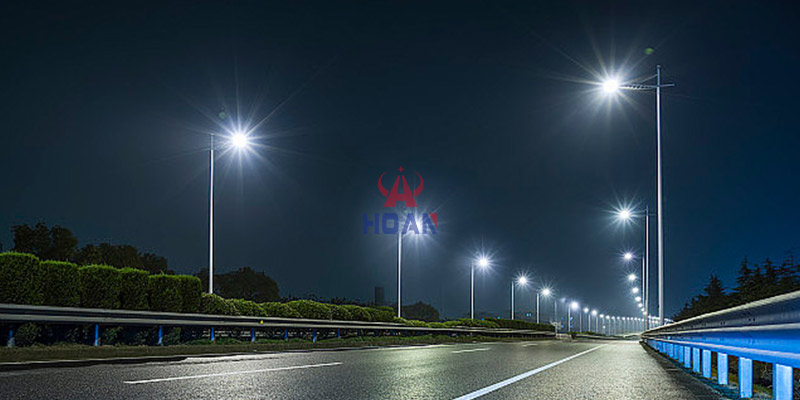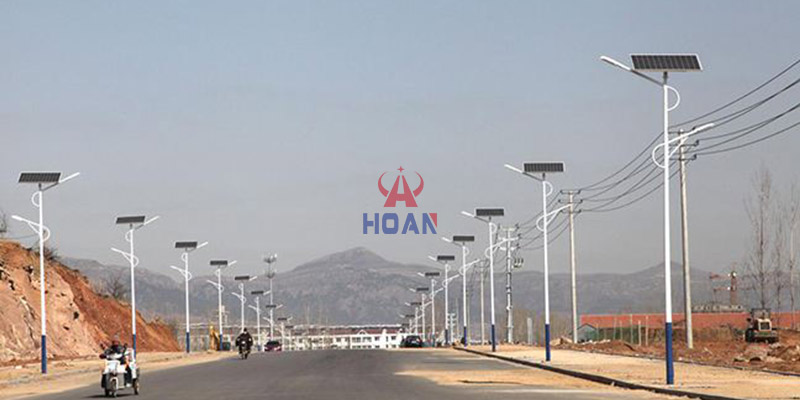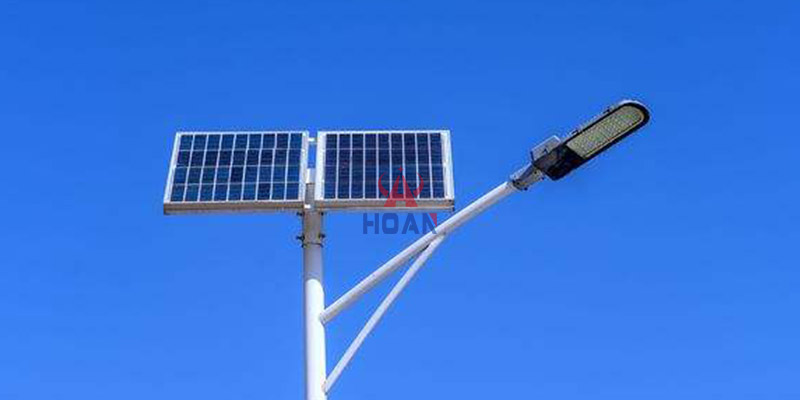As the main artery of national traffic, highways carry a large number of vehicles travelling at high speed on a daily basis. At night or under adverse weather conditions, good lighting is not only about driving safety, but also a key factor in ensuring smooth traffic. According to statistics, the lack of effective lighting of the road, the night traffic accident rate is more than 30% higher than the normal road.
Although the traditional electric lighting system can meet the basic lighting needs, but the shortcomings are becoming more and more prominent. Its high energy consumption, long-term reliance on grid power leading to high operating costs; wiring project is complex, especially in remote mountainous areas or complex terrain, the construction is difficult, high cost; frequent maintenance, line aging, lamps and lanterns damaged and other issues need to invest a lot of manpower and material resources. These problems prompt the industry to urgently look for more efficient and environmentally friendly lighting solutions.
The core component of the solar street light is the photovoltaic module, the mainstream monocrystalline silicon or polycrystalline silicon solar panels, whose photoelectric conversion efficiency can reach 18%-22%. Under sufficient light conditions, a solar panel with a power of 100W can generate about 0.4-0.5 degrees of electricity per day.
The emergence of new flexible solar panels further expands the application scenarios. These solar panels are lightweight, bendable, and suitable for special shaped light poles or building surfaces, which improves the collection efficiency of solar energy without affecting the aesthetics.
Energy storage system is the ‘energy warehouse’ of solar led street light. Commonly used energy storage devices include lithium batteries and lead-acid batteries. Lithium battery has the advantages of high energy density, long life and low self-discharge rate, and the number of charge/discharge cycles can reach 1000-2000 times; lead-acid battery, on the other hand, has lower cost and mature technology, which is suitable for projects with limited budget.
The application of intelligent BMS (Battery Management System) can monitor the voltage, current, temperature and other parameters of the battery in real time, and optimise the charging and discharging process, effectively extending the service life of the battery.
Solar street lamps are equipped with light-sensing elements, which are like keen ‘eyes’ that can sense the environmental brightness in real time. When night falls and the light is dark to a certain extent, the street light is automatically lit; when the light becomes bright in the early morning, the street light is automatically switched off.
The time-control function can flexibly set the switching time and brightness of streetlights according to the actual needs of different seasons and road sections. For example, in areas with short sunlight hours in winter, the lighting hours can be extended appropriately; in the late night with less traffic, the street light brightness can be reduced to save electricity.
With the help of 4G/NB-IoT and other communication technologies, solar street light realises remote intelligent management. Through mobile phone APP or computer platform, the manager can remotely control the switch of the street light, adjust the brightness, and check the working status of each street light in real time.
When the street light fails, the system will automatically alarm and locate the fault location, which is convenient for maintenance personnel to deal with it quickly. At the same time, the management platform can also conduct statistical analysis of the street light's energy consumption data, operating hours, etc., to provide data support for the optimisation of the lighting scheme.
The LED light source used in solar street light has the characteristics of high brightness, good colour rendering and long service life, etc. Its luminous efficiency can reach 100-150%. Its luminous efficiency can reach 100-150lm/W, which is 2-3 times of the traditional high-pressure sodium lamp, and can provide clear and even lighting at night and in rainy and foggy weather, effectively improving the driver's sight distance and road recognition.
In some curves, ramps and other special road sections, through the reasonable setting of the spacing and angle of the street lamps, to avoid the interference of glare on the driver, to further protect driving safety.
The energy storage system of solar street light makes it have strong emergency lighting ability. Even in the case of continuous rainy days, the large-capacity battery can ensure that the street light continues to work for 3-5 days.
In case of power failure, traffic accidents and other emergencies, the solar street light can still illuminate normally, providing the necessary light support for on-site rescue and traffic diversion, and reducing the occurrence of secondary accidents.
Solar street lights utilise inexhaustible solar energy and do not require payment of electricity bills. Taking a 10 km long highway as an example, if 100 solar streetlights with a power of 60W are installed and work for 10 hours a day, the electricity cost can be saved for about 219,000 RMB a year.10 years down the line, the saving in electricity cost is quite considerable.
The long lifespan of LED light source (more than 50,000 hours) greatly reduces the frequency of lamp replacement. Intelligent failure warning system can monitor the working status of the street light in real time and notify the maintenance personnel in case of failure, which reduces the cost of manual inspection.
Compared with traditional streetlights, the maintenance cost of solar streetlights can be reduced by more than 60%, which is a significant economic benefit in the long run.
As a clean energy source, solar energy achieves zero carbon emission during the use of solar street light. A single 60W solar street light can reduce carbon dioxide emissions by about 107.55kg per year. With the advancement of the ‘double carbon’ goal, the large-scale application of solar streetlights will contribute to the carbon neutrality of the transport sector.
Solar energy is a renewable energy source that is inexhaustible. The use of solar street lights, free from the dependence on traditional fossil energy, to avoid the problem of energy depletion, in line with the concept of sustainable development, is the inevitable trend of future traffic lighting.

In the main lane of the motorway, the spacing and height of solar street lights need to be scientifically calculated. Generally speaking, the spacing of street lights is controlled at 30-50 metres, and the height of the lamp post is 8-12 metres, which can achieve full coverage of the lane lighting, while avoiding too strong or too weak light.
By reasonably adjusting the installation angle of street lights, the scattering of light to the sky can be effectively reduced, thus improving lighting efficiency and reducing light pollution.
Emergency parking zone is a temporary parking area for faulty vehicles, and the lighting must be paid special attention to. In the emergency parking zone, solar street lights need to be set up in an encrypted manner to ensure that the area is well lit and to protect the safety of parking personnel and passing vehicles.
At the same time, you can set up eye-catching warning lights in the parking belt, and street lights with the use of further improve the warning effect.
Tunnel inlet and outlet is a high incidence area of traffic accidents, the main reason is that drivers are difficult to adapt to the drastic changes in light within a short period of time, resulting in the ‘black hole effect’ or ‘white hole effect’.
Solar street light adopts gradual brightness design at the entrance and exit of the tunnel, from outside to inside the tunnel, the light gradually changes from strong to weak; from inside to outside the tunnel, the light gradually changes from weak to strong. This design can effectively alleviate the driver's visual fatigue and reduce the risk of accidents.
In special road sections such as bridges and bends, the installation of solar street lights needs to fully consider the terrain characteristics. At the bend, the street lights should be arranged in an arc along the curve to ensure that the driver can see the direction of the bend in advance.
Due to the high wind force, the wind resistance of the bridge section requires higher performance of the street light. Adopt windproof and anti-seismic design of solar street lamps, can work stably in the strong wind environment, to protect the safety of lighting.
Highway service areas and toll stations have large traffic volume and high demand for large-area lighting. With its wide irradiation range and high brightness, the high mast solar street light has become the ideal choice for service area plaza and toll station.
While meeting the lighting needs, solar street lights can also be combined with landscape design, using different light colours and shapes to enhance the aesthetics of the area.

Performance Comparison
| Compare Projects | Solar Street Lights | Traditional street lights |
| Energy supply | Solar self-sufficiency | Grid power supply |
| Lighting Effects | Intelligent dimming, stable brightness |
Fixed brightness, susceptible to voltage fluctuations |
| Environmental adaptability | High and low temperature resistance, waterproof and dustproof |
Lines require regular maintenance & are susceptible to severe weather |
| Response speed | Instant-on | High pressure sodium lamp preheating time |
Cost Comparison
| Cost Type | Solar Street Lights | Traditional street lights |
| Initial investment | Higher (including solar panels & batteries) |
Lower (light fixtures and wiring only) |
| 10-year operating costs | Low (zero electricity bill, low maintenance) |
High (electricity costs account for more than 70%) |
| Comprehensive cost | The economic benefits will be obvious after 3-5 years |
Long-term costs continue to rise |
Detailed investigation of the site is required before installation, and assessment of light conditions is the key. Choose a location with long sunshine hours and no obstruction to install solar panels to ensure that they can fully receive sunlight.
At the same time, test the load-bearing capacity of the foundation of the light pole, and according to the weight and height of the street light, design the appropriate foundation size to ensure the stability of the light pole. In addition, it is also necessary to plan the installation points to ensure that the lighting effect meets the design requirements.
Firstly, pour the foundation of the light pole, excavate the pit according to the design size, put in the reinforced skeleton, pour the concrete and vibrate it densely, and then install the light pole after the foundation strength meets the requirements.
Then install solar panels, adjust the angle and orientation, generally with the ground angle between 30 ° - 50 °, in order to obtain the best light effect. Then connect the wiring, connect the solar panels, batteries, lamps and controllers correctly, and do a good job of waterproof treatment.
Finally, install the lamps and adjust the height and angle to ensure that the lighting range covers the target area.
After the installation is completed, lighting brightness, battery capacity, wind resistance level and other indicators need to be strictly accepted. Use professional equipment to measure the illumination of the road surface to ensure that it meets the national standards; test the battery capacity to see if it meets the design requirements; and conduct a wind test on the light pole to verify its stability under the specified wind speed.
Only when all the indicators meet the acceptance standards, the solar street light system can be officially put into use.
1.Daily Inspection
Daily inspection mainly checks whether the surface of the solar panel is clean, such as dust, leaves and other debris, timely clean up to ensure that it receives sunlight normally. At the same time, check whether the light pole is stable, whether there is any tilting and loosening phenomenon; check the luminous state of the LED lights, and record the brightness abnormality in time.
Quarterly testing of battery charging and discharging performance, using professional equipment to measure battery voltage, capacity and other parameters, to determine whether the battery needs maintenance or replacement. Functional testing of the control system to ensure the normal operation of light sense, time control and other functions.
Carry out aging inspection on the lines every year, replace the aging wires and connectors; carry out anti-corrosion treatment on the light poles to prolong their service life.
For common failures, such as street lights do not light up, flashing abnormally, etc., you can first check whether the line connection is loose and whether the controller works normally. If there is no problem with the line and controller, then check whether the battery and LED light are damaged.
For simple faults, maintenance personnel can be dealt with on-site; for complex problems, it is necessary to replace the damaged parts in time, and the cause of the failure and the results will be recorded and archived.

Solar street light has become an ideal choice for highway lighting due to its efficient technical characteristics, excellent safety and security, significant economic benefits and green environmental protection attributes. It not only enhances road safety and traffic efficiency, but also brings new modes and concepts for highway construction and management. It is believed that in the near future, solar street lights will play a greater role in the field of highways, and make a greater contribution to people's travel safety and environmental protection.